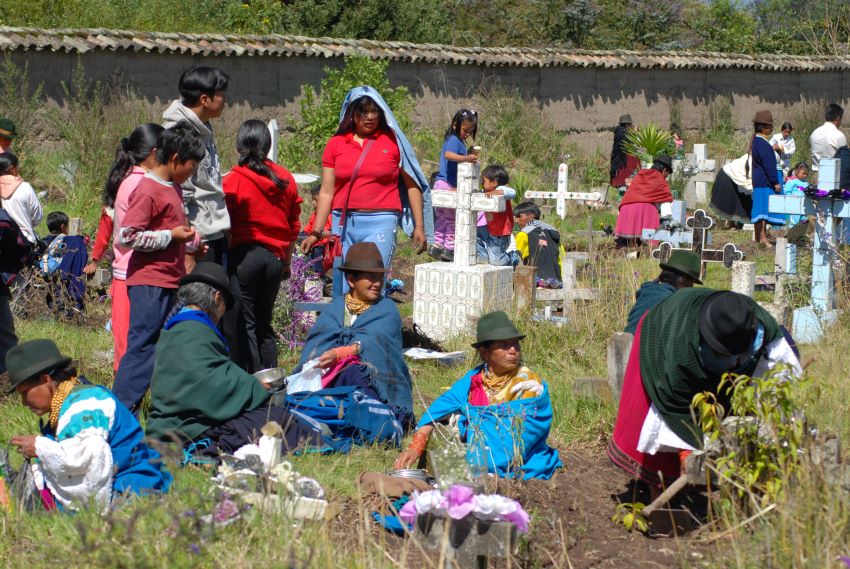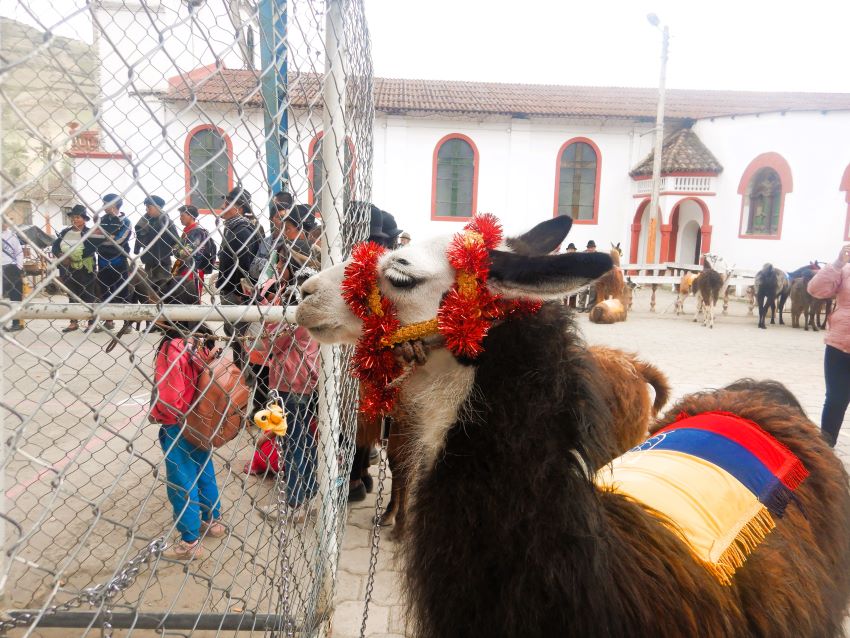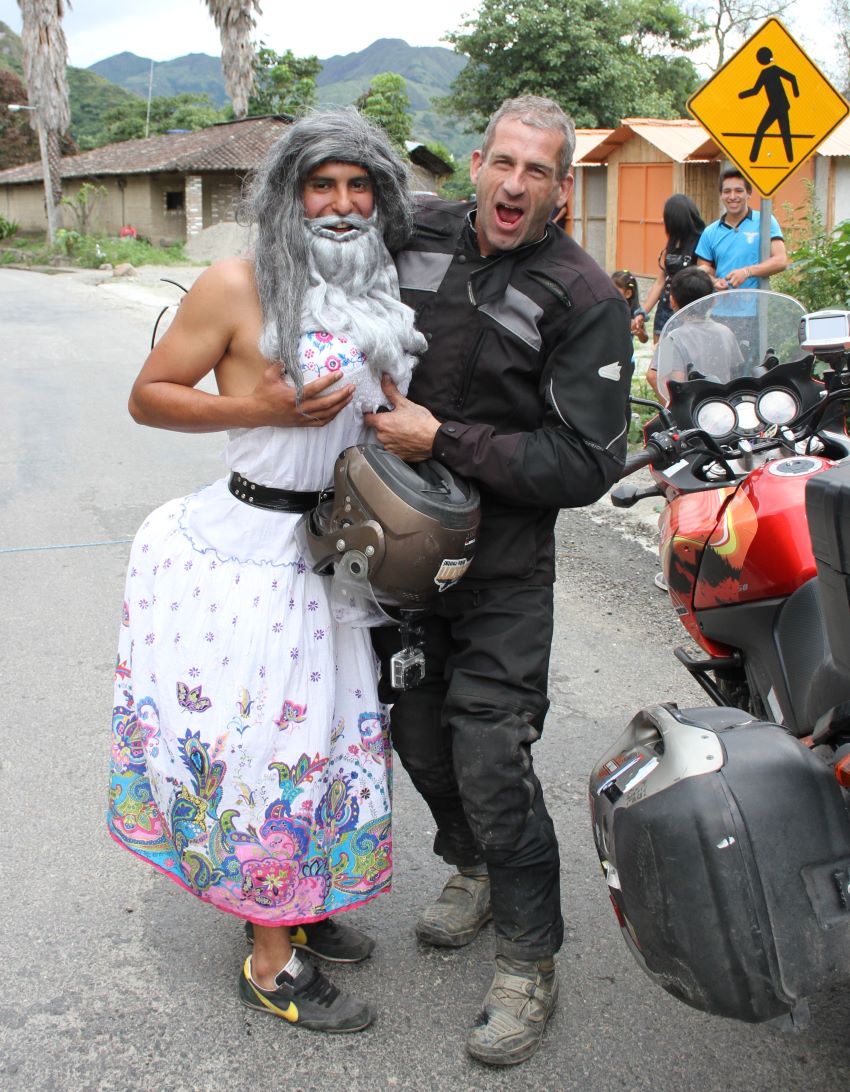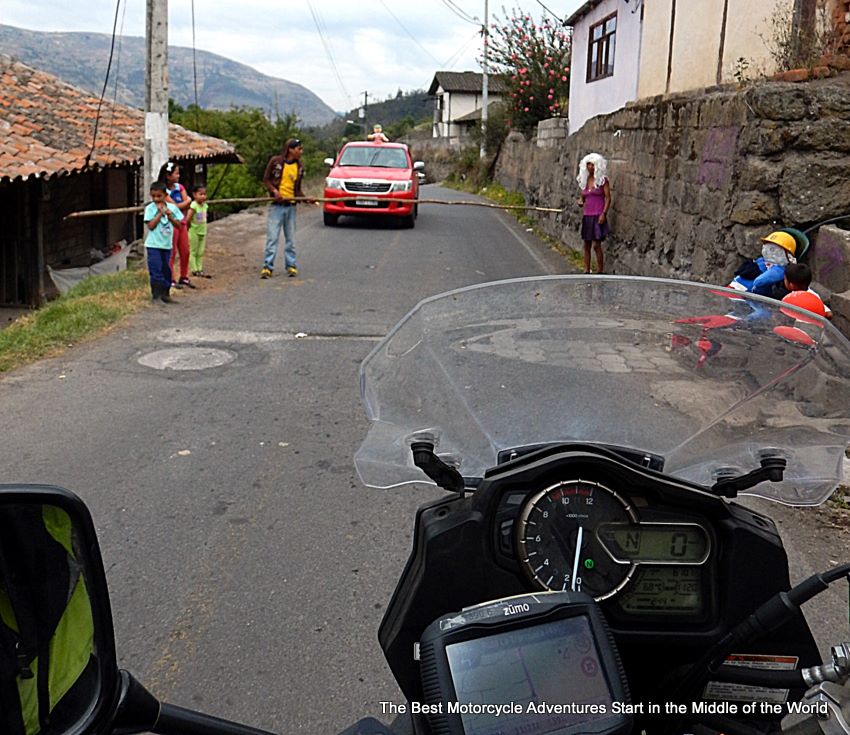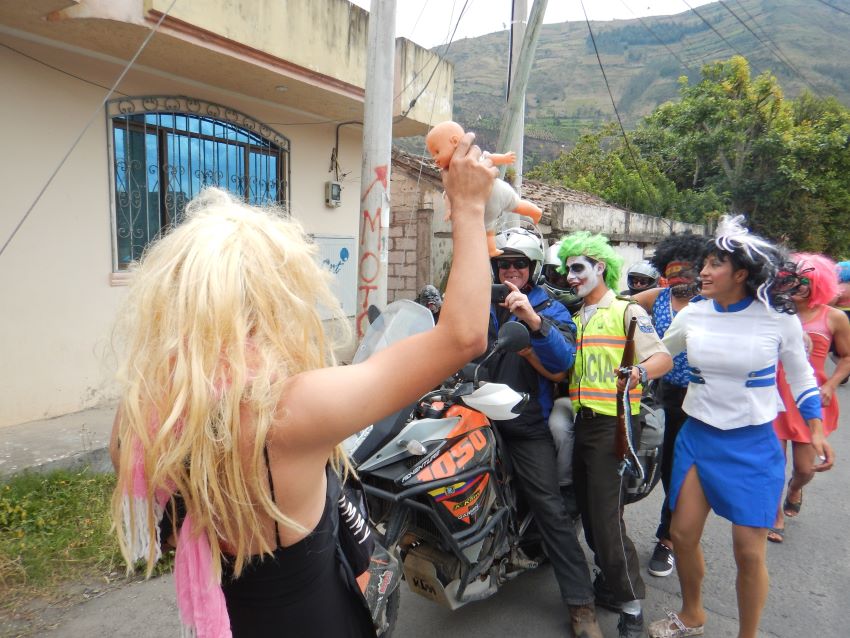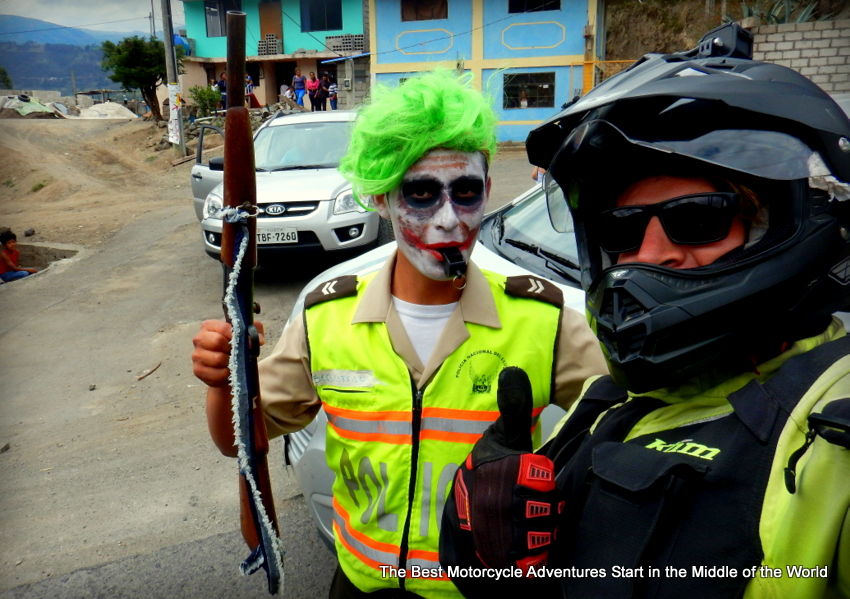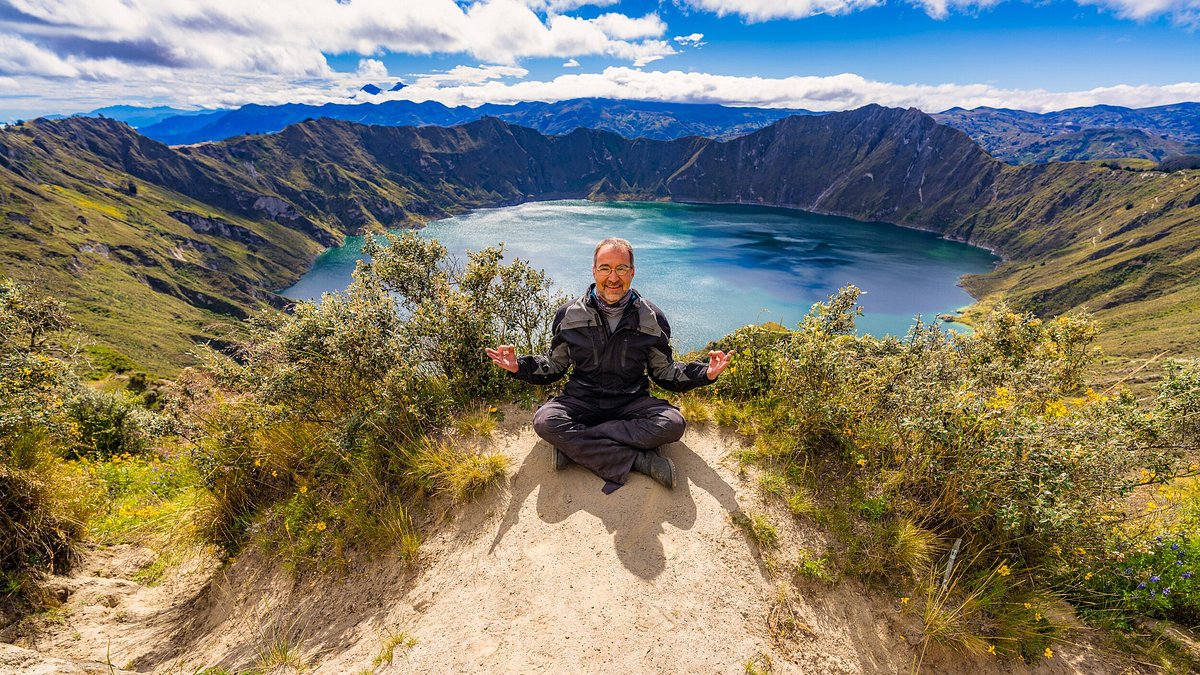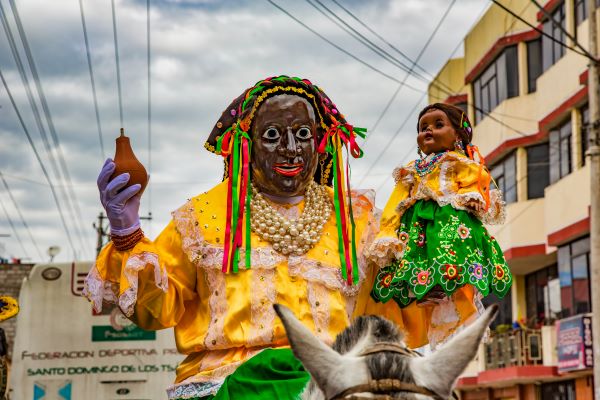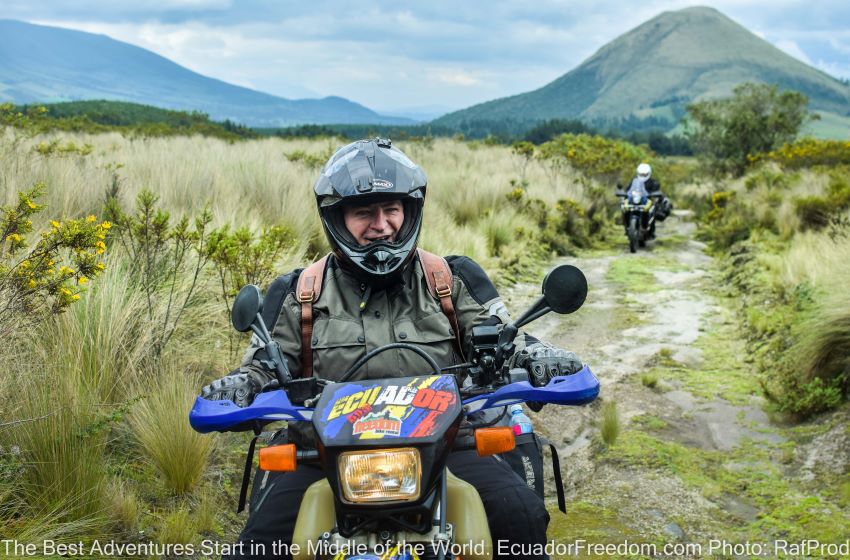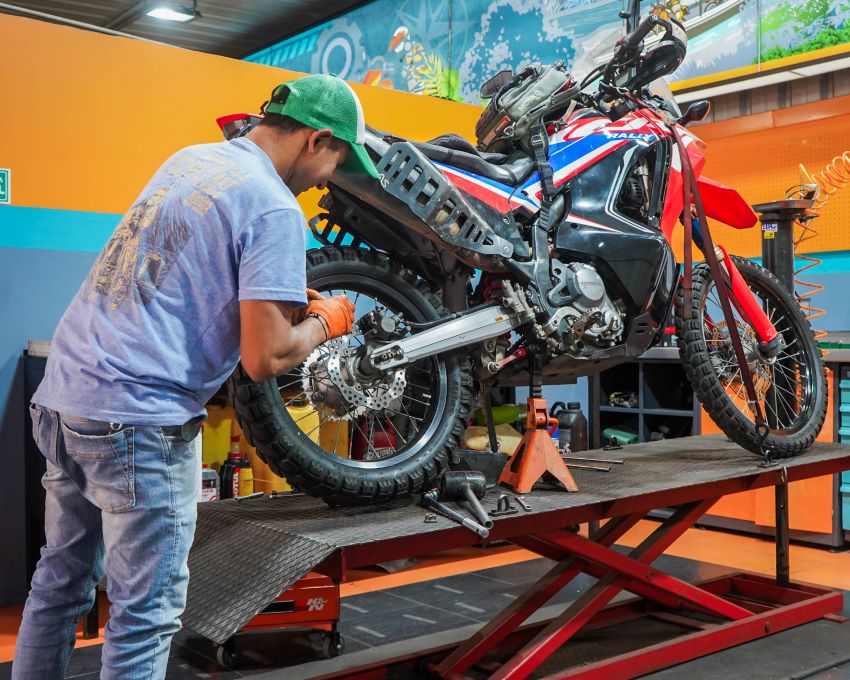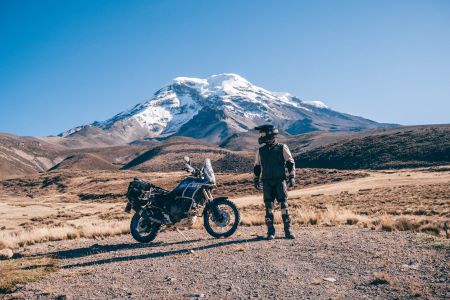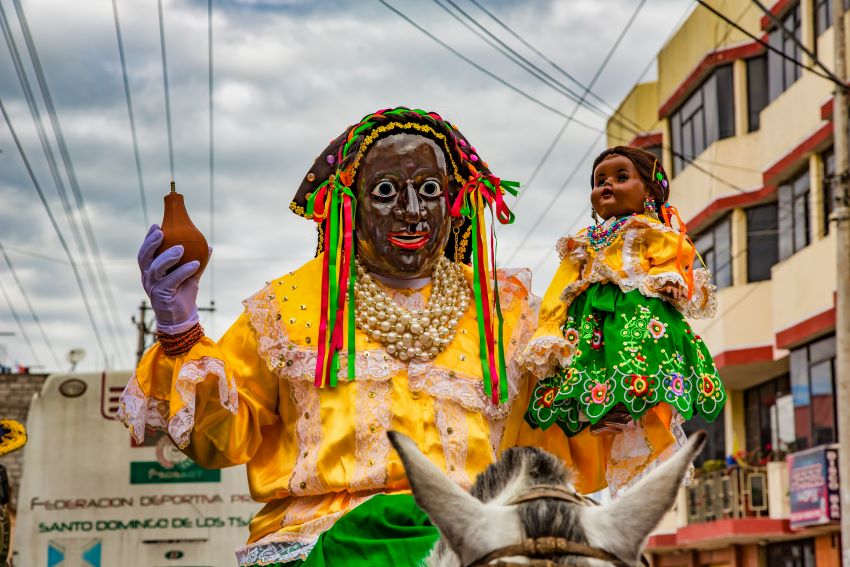
Ecuador's Holiday Wonders: Unforgettable Motorcycle Adventures in a Land of Strange Traditions
Listen up, thrill-seekers and two-wheeled adventurers! If you're itching for your next big escapade, let us put Ecuador on your radar, especially during the festive holiday season. This vibrant country boasts some of the most outlandish, colorful, and downright weird traditions you'll find in South America.
So, grab your helmet, pack a pair of yellow underwear, stuff your pockets with lentils, and head to the equator for an unforgettable motorcycle journey during one of the year's most electrifying times!
Ecuador is a top-tier year-round destination for motorcycle adventurers, blending heart-pounding routes with a tapestry of rich cultural traditions. So, gear up and get ready to plunge into vivid celebrations and unearth the hidden gems of this magnificent land. There's no better way to immerse yourself in the cultural tapestry of Ecuador than from the saddle of an adventure bike, truly getting to know the country and its spirited people.
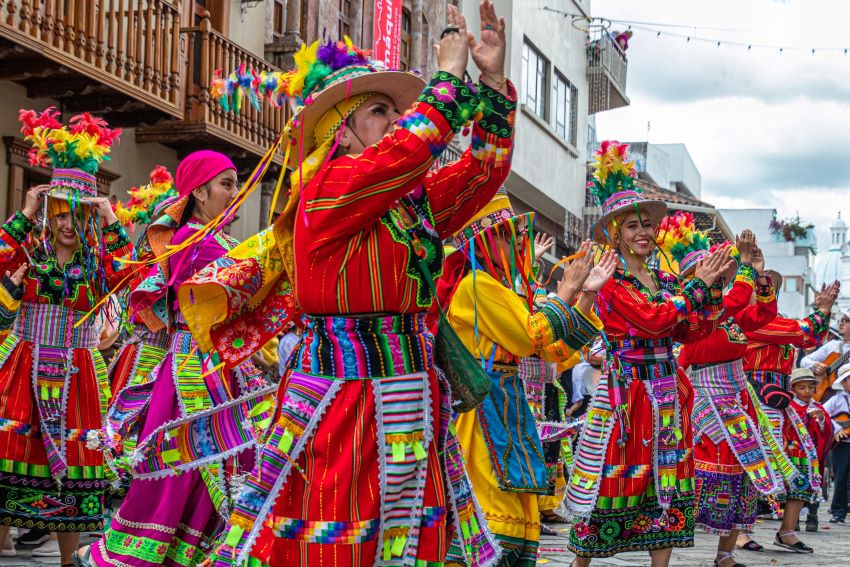
Ecuador’s Crazy Holiday Season: What to Expect
So, you're gearing up for the holiday season in Ecuador? Get ready, because this isn't your typical yuletide jaunt. Thanks to its spot on the equator, Ecuador's temperatures and weather is pretty steady all year. Whether you're cruising through the jaw-dropping Andes, surfing in the Pacific, or meandering in the verdant Amazon, expect sunny skies during your trip. Just pack some layers to handle those altitude shifts and you're golden.
When the holidays roll around, Ecuador morphs into a dazzling spectacle from the coast to the mountain villages. Each nook and cranny of this vibrant land puts its own spin on the festivities, blending age-old indigenous customs with colonial traditions. As you traverse this mesmerizing country, you'll be swept up in a whirlwind of kaleidoscopic parades, rhythmic traditional dances, and an explosion of local cuisine that turns every pit stop into a sensory banquet. Riding through Ecuador during the holiday season is like getting a warm, festive hug from the country itself.
Ecuadorians Share a Meal with Departed Loved Ones in the Cemetary of the Day of the Dead, November 2
The Day of the Dead, of Drinking Blood, and Eating "Babies"
The ancient Inca civilization introduced a tradition to Ecuador around 500 years ago known as Aya Marcay Quilla, which translates to “the month of raising the dead.” In the Inca calendar, this festive observance coincided with November, designated as the month of the dead, and marked the conclusion of the agricultural season. Preparing for the new harvest involved various rituals, one of which included exhuming mummified ancestors from their tombs. These deceased family members were dressed in their finest attire, adorned with feathers on their heads, serenaded, danced with, and offered a special drink made from llama blood, symbolizing the union of life and death. This day was celebrated with joy as it signified the return of souls.
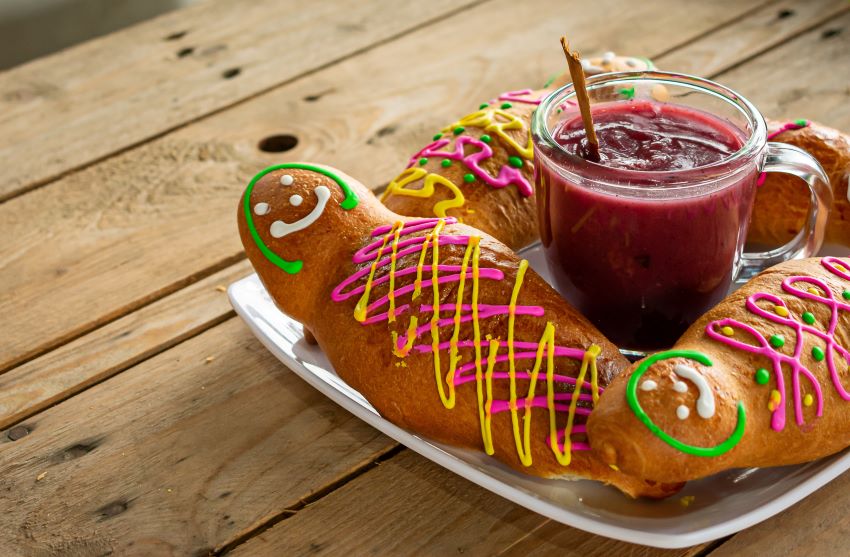
Colada de Morada and Guaguas de Pan (bread babies)
Upon the arrival of Spanish conquerors in Ecuador, Catholicism was amalgamated with indigenous traditions, although the practice of exhuming the dead was outlawed. To substitute this ritual, they introduced the custom of baking bread in the shape of shrouded figures, which would then be placed on the graves of their loved ones. Over time, this practice evolved into a more cheerful tradition – the creation of bread decorated to resemble children and called "guaguas" (pronounced like the cry of a baby -"waaaah waaaahs"), which is consumed along with a drink known as Colada Morada. This drink replaced the llama blood concoction and is made from Andean blueberries along with other uniquely Ecuadorian fruits and spices such as Ishpingo, Mashua, and Babaco. Both the drink and the bread are rich in symbolism: the colada represents the blood of the deceased, while the guaguas symbolize the body.
Riding through Ecuador's small towns on the Day of the Dead - November 2 - you will encounter extended families gathered in cemeteries to picnic and honor their ancestors, pay their respects to the departed, and share family histories with their children, ensuring the preservation of their heritage for future generations.
You will have numerous opportunities to savor the guaguas de pan and sip the colada morada. These delectable treats are far too delicious to be confined to just one day of celebration!
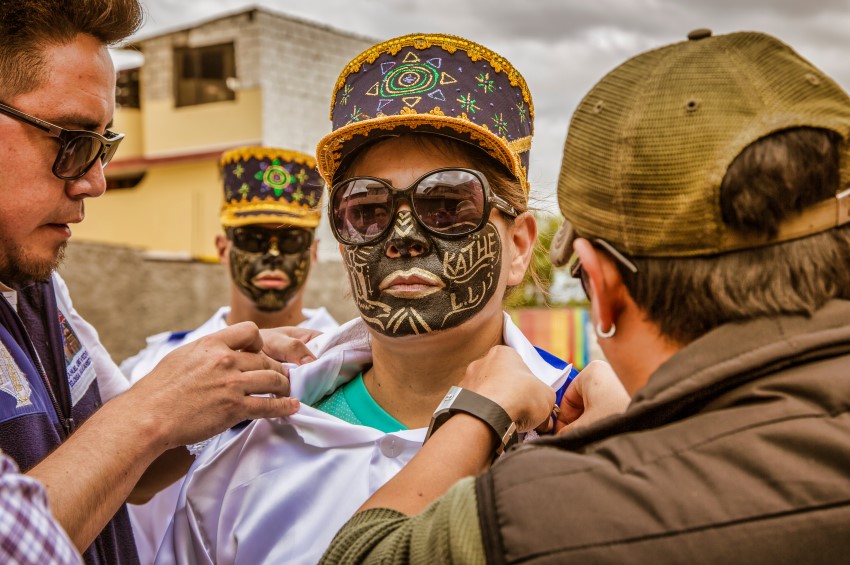
The Positive Legacy of Blackface at the Mama Negra Festival
Next on the calendar is the Mama Negra Festival, set to occur on November 2 this year in the highland town of Latacunga. This city, perched along the awe-inspiring Avenue of Volcanoes, transforms into a riot of colors and sounds. At the heart of the festival is the figure of Mama Negra, the pivotal character, who leads a procession of horseback riders adorned in elaborate costumes; she carries vases filled with milk and water to distribute among the residents. The streets are packed with exuberant crowds, and the atmosphere is nothing short of electrifying. As you wander through Latacunga's lively streets, you'll find yourself caught up in the jubilant spirit of the celebration.
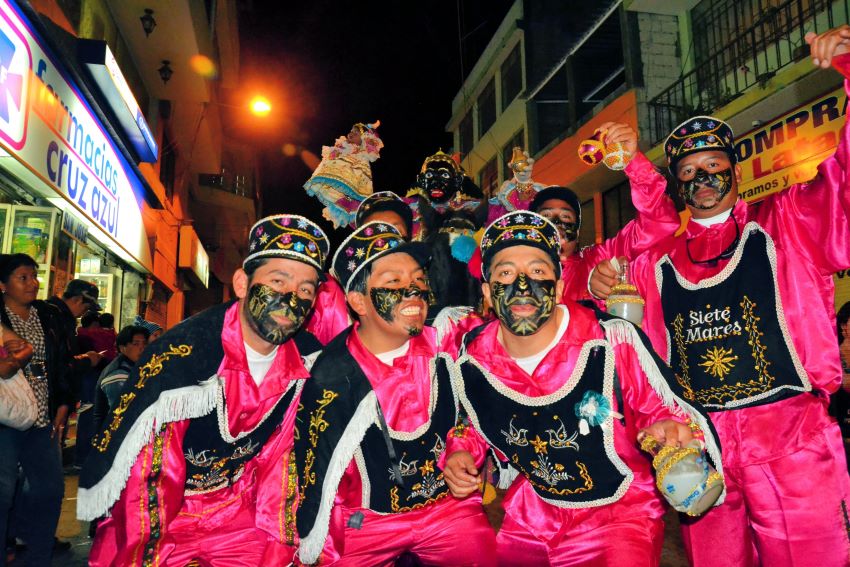
What many visitors might not realize is that the person beneath the Mama Negra facade has never been a woman, nor has he ever been black. Tradition dictates that a respected citizen, always a man, takes on this role. While many from the United States and Canada would instantly decry the portrayal of a black woman by a white man in blackface as racist, Ecuadorians as a whole see no issue with it. In fact, being chosen to play Mama Negra has long been a mark of pride within the Latacunga community.

The origins of Mama Negra trace back to the darkest days of slavery when Spanish criollos marched enslaved black men and women to toil in the mines. Appalled, the people directed their prayers to the Virgin of Merced. After Ecuador abolished slavery in 1852, the figure of Mama Negra emerged. She became an image of a freed black woman with control over her own destiny, blending aspects of the Virgin herself. The parade symbolizes the Virgin guiding the people to freedom. Perhaps it is for this reason that many parade participants wear blackface—they represent the formerly enslaved peoples of Ecuador and the enduring freedom and solidarity of the community.
The parade lasts several hours, and with the large crowds and congested traffic, your best bet to get there is by motorcycle. By booking a November 1 departure on our self-guided Avenue of Volcanoes, Quilotoa Loop & Amazon Basin tour, we can arrange an additional rest day in the nearby town of Salcedo, ensuring you can fully immerse yourself in the festivities.
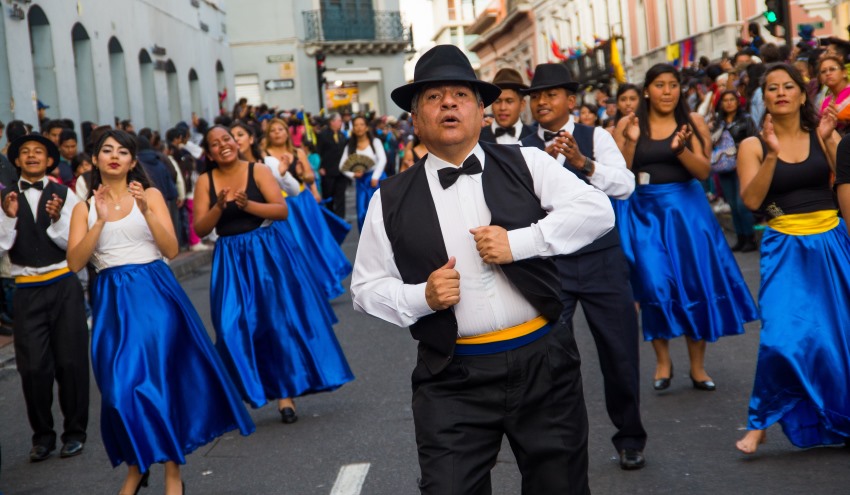
Quito's Annual Fiesta: Where the Party Buses Never Stop Rolling
December 6th marks the official founding day of the capital city of Quito, dating back a solid 490 years to 1534. But let's be real—it's not just a day; it's a week-long extravaganza. Picture this: you can jump on and off "Chivas," those open-air party buses decked out with live bands, disco lights, and dance floors. Cruise through the city on these mobile fiestas, stopping at one plaza after another to bust a move. You'll be left in awe of the sheer stamina of Ecuadorian revelers.
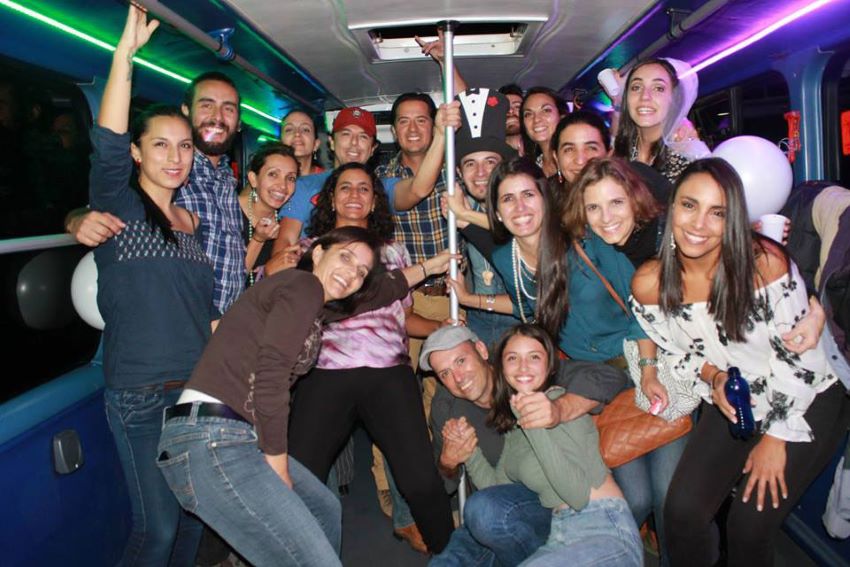
The city pulses with energy thanks to street musicians, performers, the Miss Quito beauty pageant, and non-stop concerts. Parades wind through the historic center, and plazas become the stage for speeches from the mayor and president. The streets are a sea of spectators and impromptu parties, giving you a front-row seat to the heart and unyielding spirit of the Ecuadorian people.
Experience the Spirit of Novena: A Unique Christmas Journey in Ecuador
The Christmas Novena in Ecuador, known as the Novena de Aguinaldos, marks the nine days leading up to Christmas, beginning on December 16th, symbolizing the final months of Mary's pregnancy and culminating in the joyous birth of Jesus in Bethlehem. It unfolds with vibrant celebrations and holds great significance as a time for communities in The Andes to come together in faith and unity. Across Ecuador, particularly in its charming small towns and villages, elaborate feasts are hosted, drawing together people of all classes. Children fill the air with music and dance, passionately re-enacting the events leading to the birth of Christ. This lively festivity continues until Christmas Eve, fostering a sense of joy and communal spirit. a special version of our Offroad Ecuador Excursion Tour, commencing on December 16th this year, will offer an exclusive chance to immerse yourself in these authentic celebrations. We have specially tailored the itinerary to include a more extended stay in the picturesque village of Angamarca, renowned for its genuine Novena festivities. From a cozy lodge overlooking the village, you’ll partake in delivering toys and cookies to children and dancing with both the young and elders. Join us for an unforgettable journey into Ecuador's heart, where tradition meets adventure.
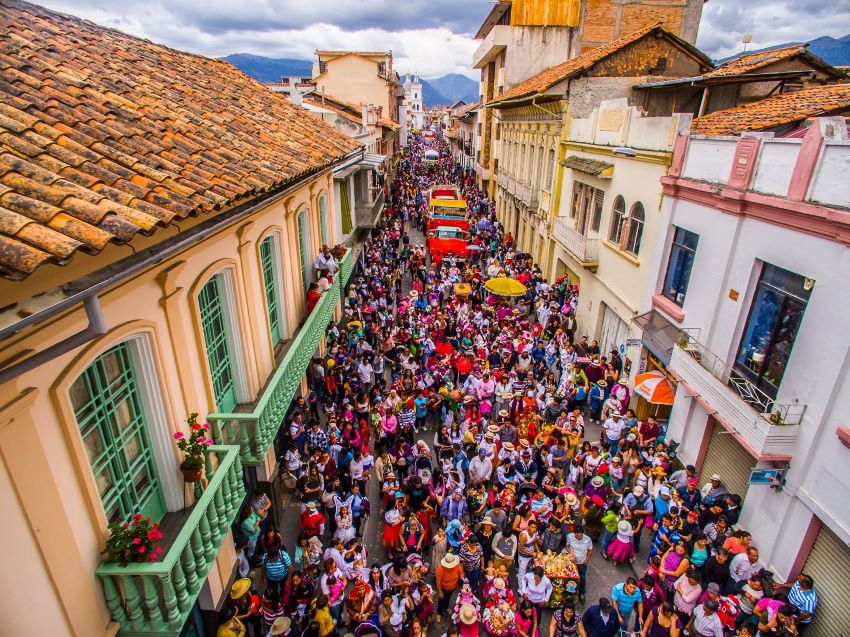
Pase de Niño Viajero - Cuenca's Christmas Eve Extravaganza
In Cuenca, Azuay, Christmas Eve bursts into life with the Paso de Niño Parade, a captivating spectacle that merges sacred Catholic rituals with vibrant Indigenous traditions. The star of this lively parade is the Traveling Child, a sculpture of baby Jesus that once traveled to Rome and was blessed by Pope John XXIII. This beloved figure is celebrated with a grand procession featuring colorful floats, lively bands playing songs dedicated to the Child, and children dressed as biblical characters, shepherds, gypsies, and various indigenous figures.
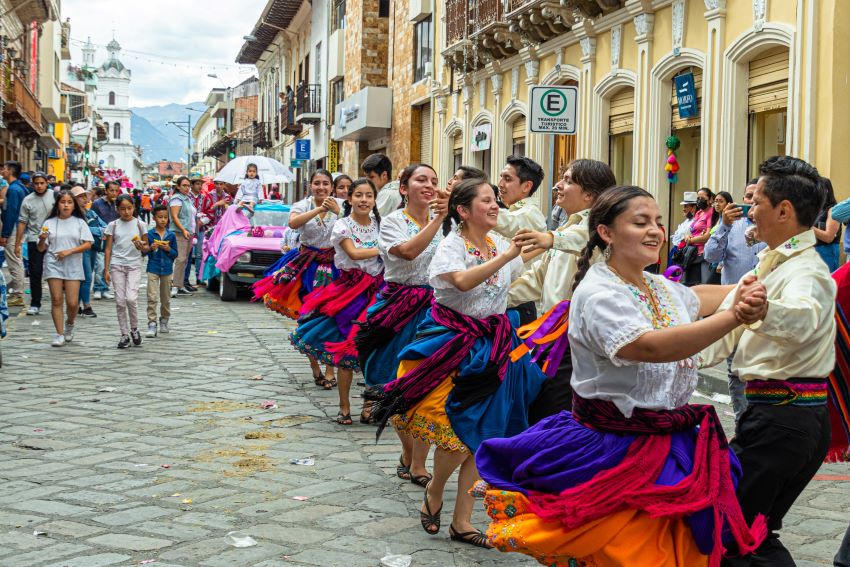
The parade is meticulously organized by dedicated priests and volunteers who ensure the tradition endures. Boasting participation from around 15,000 people and drawing crowds of up to 120,000, the Cuenca parade claims to be the largest of its kind in Latin America, offering a festive blend of culture, community, and holiday cheer.
Tour Suggestion: Take our self-guided Inca Royal Roads tour with a start date of December 19th so that you will be in Cuenca for the Pase de Niño celebration
Burn the Old Year: Ecuador’s New Year’s Bash on Two Wheels!
New Year’s Eve in Ecuador isn’t just another night; it’s a wild, nationwide fiesta that takes over every street, every alley, and every highway. Forget the flashy lights of Times Square—this is where the real action is, and it stretches far beyond the confines of any single city. The entire country transforms into one massive party, with celebrations springing up along roadsides, in bustling towns, and even the smallest villages. And what better way to experience this chaotic, adrenaline-pumping spectacle than on a motorcycle? Zoom from one party to the next, letting the roar of your engine be your invitation into the heart of Ecuador's unrestrained revelry.
Now, for the uninitiated, Ecuadorian New Year’s customs might seem downright bizarre. This isn’t just about knocking back a few drinks at your local bar. No, this is an all-encompassing, full-throttle immersion into Ecuadorian culture where tradition meets outright hilarity. One of the most iconic features of these celebrations is the "Años Viejos" or "Old Years." Think of them as scarecrows with a grudge against the past year. These life-size effigies, crafted from paper-mâché and stuffed with newspaper or hay, represent whatever or whoever you're leaving behind in the old year that you don't want to come with you into the new. Think ex-girlfriends, disloyal employees and rude government workers. Political figures? They’re popular targets—after all, who doesn't want to torch a bad political year right out of existence?
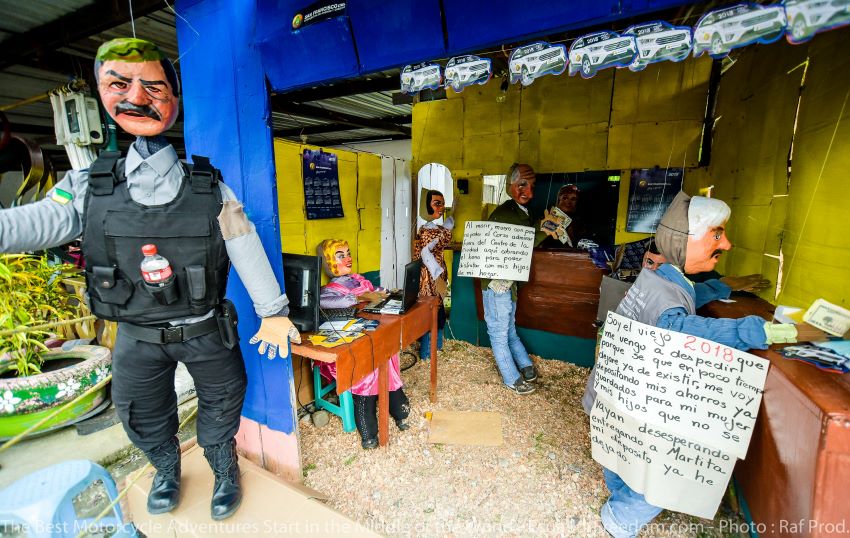
Here’s where it gets downright wild: these effigies have widows mourning their impending demise. Picture this—men dressed in absurdly exaggerated drag, strutting the streets and begging for funeral money. Yes, you heard that right. Even the most macho Ecuadorian men don wigs and gowns for this tradition. It's a rite of passage and a massive exercise in theatrical hilarity. As you ride your motorcycle from one effigy to the next, expect to be roped into these antics, literally. They’ll pull a rope across the road, demanding coins for the funeral. In reality, it's just a cheeky way to keep the party fueled with booze.
You'll be hard-pressed not to get swept up in this infectious, outrageous display. Each stop along your journey is another chance to dance, laugh, and toss back a drink with locals who welcome you as if you’ve been a part of their tribe all along. The atmosphere is electric—filled with the hypnotic rhythms of music and the tantalizing aroma of street food. Laughter is contagious, and camaraderie abounds as locals and tourists alike revel in the shared celebration. You’re not just witnessing a party; you’re an active participant in a whirlwind of hilarity and good-natured mischief.
As the clock strikes midnight, the anticipation is palpable. It's time for the grand finale—setting those Año Viejos ablaze! The skies come alive with the crackle of fire and the cheers of jubilant crowds. But wait, it’s not enough to watch the spectacle; you’ve got to leap across the flames 12 times for good luck. It’s an exhilarating tradition that will have your heart racing as you leave the trials of the past year smoldering behind you.+
And it doesn’t stop there. Ecuadorians are big on superstitions, and New Year's Eve is a goldmine for quirky customs. Don’t forget to pop twelve grapes into your mouth at midnight—each one representing a wish for every month of the coming year. Want to stack the odds in your favor? Slip into some yellow underwear for prosperity. Craving travel and adventure? Grab an empty suitcase and sprint around the block. It's all about setting the tone for the year ahead with a mix of hilarity and hope.

What you’ll witness is a spectacle of strange and intriguing behaviors, making Ecuador one of the most captivating places on the planet to kick off a new year. It’s a dazzling display of tradition, chaos, and unity that draws people from all corners of the globe. This is not just a celebration; it's an experience that etches itself into your memory with every wild, unrestrained moment.
So why not join us on our Guided Andes Twist Motorcycle Tour departing December 26th? Get ready to throw caution to the wind and dive headfirst into a New Year's celebration like no other. We’ll ride through the heart of Ecuador, embracing the chaos, the culture, and the camaraderie as we ring in the new year in the most exhilarating way possible. This isn’t just a tour; it’s a full-throttle adventure you’ll never forget!


